
Everything you need to know to set up an aquarium
We’ve been crafting captivating aquariums for over 45 years for bettas
ENG
Each aquarium is a microcosm within glass walls, governed by its own strict laws. It’s a realm akin to the wonderland Alice stumbled into, yet unlike a mere fairy tale, it’s one you can bring into your very home. With just a grasp of your inhabitants’ needs, caring for them becomes as simple as tending to a beloved dog or cat.
We offer all the essential insights to help you establish your inaugural aquarium, whether it’s for bettas, goldfish, or guppies. We’re confident this hobby will enchant you, beckoning you into its depths. For further guidance, delve into our blog at tropicaledu.pl. With the help of QR codes you will quickly get to the recommended materials.
Share aquarium passion with us!

How to set up an aquarium?
The very process of setting up an aquarium is not difficult. Just buy a tank, a suitable filter, heater and lighting. Choose the substrate and aquatic plants. Flood the tank with water and turn on the equipment.
Remember, however, that an aquarium filled with fresh tap water and a new substrate and a filter with clean filter cartridges is not a suitable place for fish to live. In order for it to become a safe home, it must first be colonized by bacteria and other microorganisms. The period during which the aquarium is colonized by bacteria is called maturation.
Aquarium maturation is a process that occurs in any new tank, and its proper handling at this stage can help to avoid many serious problems.
What do you need to know about nitrification?
Nitrification plays a major role in the maturation of the tank. This is a biochemical process carried out by bacteria that enables fish and plants to live in home aquariums.
Nitrifying bacteria are responsible for the transformation of nitrogenous compounds in the aquarium. The source of these compounds is organic matter (feces of fish, crustaceans, snails, food scraps, parts of aquatic plants). Its decomposition by bacteria and other microorganisms produces ammonium ions (NH4+) among other things.
CAUTION! As the pH of the water increases (> 7 pH), ammonium ions turn into ammonia (NH3 ), which is toxic to fish.
dead leaves
THE MOST TOXIC
f ish waste excess food nitrites nitrates plants
amonium ions
water changes ammonia
MORE TOXIC
Safe concentrations
NH3 < 0.2 mg/l
NO2 - < 0.3 mg/l
NO3 - < 30 mg/l
LESS TOXIC
At this point, nitrifying bacteria get to work, oxidizing ammonium nitrogen (NH4+/NH 3) to nitrite (NO 2 - ), which in turn is oxidized to nitrate (NO3 - ). Remember that nitrites (NO 2 - ), like ammonia, are highly toxic to fish. Only nitrates (NO3 - ) are relatively safe, and their excess can be removed from the aquarium by regular water changes. To maximize the capacity of nitrifying bacteria, biological filters are used to purify water. These can be both internal filters (in smaller aquariums) and bucket filters. The filter media used in them (sponges and/or ceramics) provide a substrate on which bacteria settle. Remember that the biological filter should be cleaned very rarely, so as not to disturb the beneficial bacteria.
When can you let fish into a new aquarium?
Nitrifying bacteria develop slowly in the aquarium. Therefore, if you let the fish in during the first weeks of the aquarium’s operation, you will notice high concentrations of ammonium/ammonia ions (NH4+/NH3) and nitrite (NO 2 - ). As you already know, they are toxic to fish. As a result, your new fish will be in great danger. A maturing aquarium should never have a full scheduled fish stocking, as fish are the main source of nitrogen compounds. The more fish in an aquarium, the more ingredients that produce toxic compounds. In a mature tank aquarium tests will only show the presence of nitrates.
Learn more:
Water change

Biological filtration

How to carry out aquarium maturation?
1 Place the substrate, decorations and technical equipment in the aquarium. You can plant the plants before filling the aquarium with water. However, remember to keep them moist so they don’t dry out. You can also plant them after partially filling the aquarium with water.
2 Pour the water and start the technical equipment (filter, heater, lighting).
3 Use Tropical Supreme water conditioner. It will remove chlorine and bind heavy metals. In addition, it will make the fresh water more friendly to future aquarium inhabitants, including the bacteria you will introduce in the next step.
4 After a few minutes, pour Tropical Bacto-Active and Tropical Nitri-Active with bacteria into the aquarium. They complement each other. One accelerates the decomposition of organic matter and colonization of the aquarium by nitrifying bacteria, while the other introduces nitrifying bacteria. Ensure good oxygenation of the water by using a diffuser in the filter or an additional aerator.
5 Remember that there is no organic matter in the new aquarium. You have to introduce it into the tank. You can use a bit of fish food for this. You can also introduce ornamental snails in. Aquatic plants are also a good source of organic matter. Before they acclimate to the aquarium, they usually lose their leaves. There will always be something that dies, detaches, and eventually, if you don’t remove these remains, it will decay.
6 Buy aquarium tests. At this stage, Tropical 6 in 1 strip test will be sufficient. When the test ceases to show the presence of nitrite (NO 2 - ), and at the same time nitrate (NO3 - ) appears, it will mean that full nitrification of nitrogenous compounds in the aquarium is taking place.
7 This is the moment when you can let the fish into the tank. If you let all of them in, be sure to monitor the concentration of nitrogen compounds and do regular water changes (20-30%). Treat the water after each change and add products with bacteria. Initially, do not feed the fish too much. The system may not be ready for such a load of feces and urea. Control water parameters with Tropical 6 in1 Test strip test or drop tests: Tropical NO 2 - Test, Tropical NO 3 - Test. Learn more: Maturation of the aquarium
a few minutes


Water treatment products
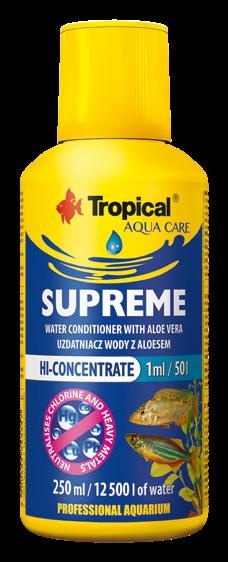

SUPREME
Water conditioner with aloe
superefficient water treatment product with aloe extract for quick conditioning raw tap water intended for aquarium use recommended when changing water and starting new tanks quickly neutralizes toxic chlorine, which is dangerous for aquarium fish, and heavy metal salts protects fish from the aggressive effects of raw tap water thanks to aloe extract, it has an anti-stress effect, soothes abrasions and accelerates the regeneration of damaged epidermis works immediately, hence proves useful when it is necessary to quickly change large volumes of water
TREATMENT: 1 ml (approx. 25 drops) / 50 l of raw tap water. Always use in a newly started tank and after each partial or complete water change.
INSTRUCTIONS: Apply other products only after a few minutes.
TROPICAL BACTO-ACTIVE
Water treatment product with bacteria for freshwater aquarium. It removes organic waste and accelerates aquarium maturation

it contains selected live cultures of biologically active bacteria that break down organic matter accumulated in the substrate and filters, initiating nitrogen cycle the ammonium ions released in this process accelerate the maturation of the aquarium, stimulating the development of nitrifying bacteria recommended for new tanks with treated water, mature aquaria after changing water, filters or following medical treatment of the fish if used regularly, it accelerates the decomposition of organic matter, removes water turbidity and unpleasant odors, and together with Tropical Nitri-Active, maintains the biological balance in the aquarium

TREATMENT: treat raw tap water with Supreme and one of the following products: Blacklarin or Shrimp Guard. Immature tanks – 5 ml / 75 l of water once a week, after 3 weeks dose as in mature tanks. Mature tanks – 5 ml / 45 l of water once a month.

TROPICAL NITRI-ACTIVE
Nitrifying and denitrifying bacteria for aquarium
a product with selected strains of nitrifying and denitrifying bacteria it accelerates the maturation and stabilization of the aquarium by quickly activating the nitrogen cycle
the unique combination of aerobic bacteria and facultative anaerobes actively supports the functioning of the aquarium under both aerobic and anaerobic conditions by settling the filters and the substrate the product is intended for use in young and mature tanks if used regularly, it ensures biological balance and supports self-cleaning processes in an aquarium
TREATMENT: treat raw tap water with Supreme and one of the following products: Blacklarin or Shrimp Guard. Setting up a new aquarium and following a medical treatment: 20 ml / 100 l of water once a week for 3 weeks, mature tanks: 10 ml / 100 l of water once a week. The dosage may be increased as needed. Turn off the UV lamp during use. It can be used together with Tropical Bacto-Active.
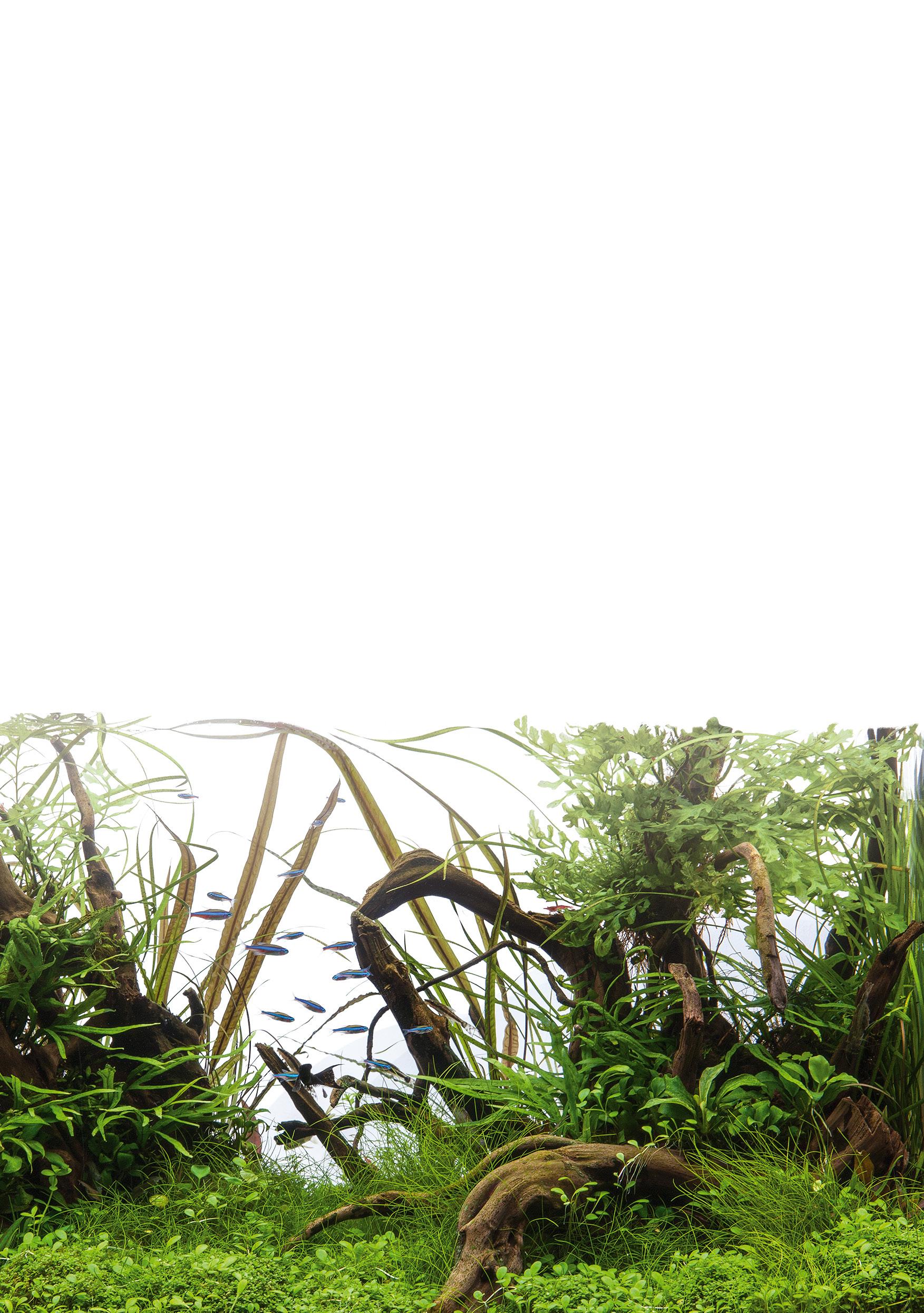

Care products for plants

AQUAFLORIN POTASSIUM
Potassium and trace elements for aquarium plants
a mineral fertilizer with potassium for aquatic plants indispensable when shortage of potassium occurs in a tank and during first few months of a new tank, when it is not recommended to use other macronutrients does not contain nitrogen and phosphorus, therefore can be used in tanks with dense population of fish, where these two elements are released from fish’s feces and leftovers
carefully selected composition of this agent lowers the risk of algae infestation and provides the plants with indispensable nutrients, enhancing their growth and appearance
COMPOSITION: 10 ml of product contains: potassium (K) 130 mg, cobalt (Co) 0.2 mg, copper (Cu) 0.2 mg, iron (Fe) 12.0 mg, manganese (Mn) 0.4 mg, molybdenum (Mo) 0.5 mg, zinc (Zn) 0.3 mg.

TREATMENT: 10 ml / 100 l of water, each time the water is changed. The dose may be increased and decreased while observing the growth of plants in the tank. May be used simultaneously with Kobaltosan, Aqua Plant and Ferro-Aktiv fertilizers.
Fertilizer safe for shrimps. Caution is advised with species and varieties of shrimps known for their high sensitivity.
FERRO-AKTIV Chelated iron for plants
a mineral fertilizer with iron for systematic conditioning of aquatic plants in common and planted tanks contains biologically absorbable iron in the form of a chelate when used regularly, it prevents chlorosis – plants’ disease manifested by young leaves turning pale and yellow facilitates the photosynthesis and the production of chlorophyll in the tissues ensures bright and intense green coloration of aquatic plants and their lush growth
COMPOSITION: 10 ml of product contains: iron (Fe) 16 mg.


TREATMENT: 10 ml / 100 l of water, each time when the water is changed. The dose may be increased and decreased while observing the growth of plants in the tank. May be used simultaneously with Kobaltosan, Aqua Plant and Aquaflorin Potassium fertilizers.
Fertilizer safe for shrimps. Caution is advised with species and varieties of shrimps known for their high sensitivity.
MULTIMINERAL
Trace elements for fish and aquarium plants
a fertilizer with trace elements to replenish aquarium water with indispensable elements such as: iron, zinc, copper, boron, manganese, cobalt and molybdenum recommended for all types of aquaria, particularly for planted tanks and breeding tanks (both with spawning pairs and the fry), during quarantine and convalescence periods, after filtration with activated carbon, to enrich distilled water and after reversed osmosis (RO)

COMPOSITION: 10 ml of product contains: boron (B) 1.2 mg, cobalt (Co) 0.2 mg, copper (Cu) 0.5 mg, iron (Fe) 8.0 mg, manganese (Mn) 0.3 mg, molybdenum (Mo) 0.2 mg, zinc (Zn) 0.2 mg.
TREATMENT: 10 ml / 100 l of water, each time the water is changed. May be used simultaneously with Kobaltosan, Ferro-Aktiv and Aqua Plant fertilizers.

Fertilizer safe for shrimps. Caution is advised with species and varieties of shrimps known for their high sensitivity.

Aquarium tests
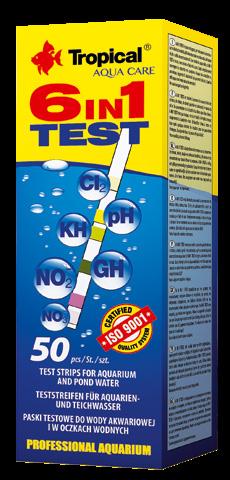

TEST 6 IN 1
strip test designed to measure nitrate, nitrite, total and carbonate hardness, pH and total chlorine concentration in fresh water safe, non-toxic and simple to use – simply dip the strip in the sample of water to be tested and after a moment read the results for six chemical parameters in case of emergency quick information about chemical parameters allows for immediate action to be taken in order to improve fish’s living conditions
TEST pH 6.0-7.8
test is intended for measuring the pH level of fresh water within the range 6.0-7.8 pH at intervals of 0.2 pH
high precision allows for obtaining very accurate results, which is particularly important for breeders of delicate species of fish, whose spawning depends upon exact levels of pH
Test pH 6.0-7.8 allows for close control of pH while adjusting its level in tanks populated with live organisms
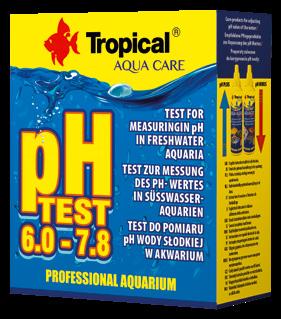


TEST GH/KH

test designed to measure by titration the general hardness (GH) and carbonate hardness (KH) of water in aquariums and ponds convenient and extremely easy to use you just add the solution of a proper agent into the water drop by drop until the color of the sample changes one drop corresponds to one German degree (°n)

TEST NO3 -


test is intended for measuring the concentration of nitrate (NO 3 - ) within the range 0 – 100 mg/l in fresh and salt water convenient and extremely easy to use the reagents are added to the water and after a short time cause discoloration of the sample
the nitrate concentration is obtained by comparing the colour of the sample with the enclosed colour scale

TEST NO2 -
test is intended for measuring the concentration of nitrite (NO 2 - ) within the range 0-3.3 mg/l in fresh and salt water convenient and extremely easy to use the reagents are simply added to the water and after a short time cause discoloration of the sample
the result is obtained by comparing the colour of the sample with the enclosed colour scale in the aquarium, nitrite is produced during the bacterial breakdown of fish wastes, uneaten food, and other organic substances because nitrite is highly toxic to fish, its concentration in the aquarium should be as close to zero as possible
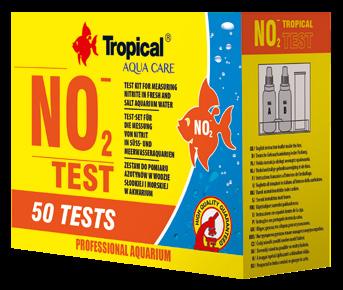
Siamese fighting fish (Betta splendens)

Diet carnivorous fish, small aquatic invertebrates, special foods for fighting fish
Companionship you should keep just one individual
aquarium fighting fish are hybrids thanks to having a labyrinth they can breathe atmospheric air males build nests and take care of the eggs and hatch
roots, dry ketapang leaves, beech, alder cones, rocks without sharp edges
Size 8 cm Aquarium size min. 25 liters Approximate lifespan 3 years pH of the water 6.0-7.0 pH General hardness 5-10°n
Decorations
Filter with low water flow Temperature 25-28°C
Bettas were domesticated about 1,000 years ago. They were originally used for fighting, so their breeding focused on selecting fish for aggression rather than their look. Beautifully colored fighting fish, varying in fin shape and size, as we know them today, are the result of the breeding work of the last hundred years. It is worth knowing that farmed bettas are hybrids, carrying not only the blood of the wild Siamese fighter in their veins but also that of other species within the splendens family, to which they belong, including Betta imbelis, Betta mahachaiensis, Betta smaragdina, Betta siamorientalis
Labyrinth – an unusual organ of fighting fish
Bettas, along with such fish as gouramis, Colisa, pygmy gourami and paradise fish, belongs to the suborder of anabantoids or labyrinth fish ( Anabantoidei ). Their distinctive feature is the possession of the labyrinth. It is an organ that allows them breathing of atmospheric air. It is located in a special chamber under the gill covers and represents an adaptation for life in oxygen-poor waters. Bettas swim beneath the surface of the water to get a bubble of air. This one goes into the labyrinth chamber, where the oxygen it contains passes into the blood. When the oxygen in the bubble is depleted, the fish swims up to the surface of the water to get a new air bubble.

Learn more: Varieties of fighting fish

Varieties
Specialized pet stores as well as breeders and importers offer a wide range of magnificent and carefully selected bettas. Below you’ll find terminology used to describe them according to the shape and length of their fins.
Veiltail is a classic longtail variety, with a long, lowered tail fin.
Plakat (PK) is a shorttail fighting fish with a tail spread angle below 180°.
Halfmoon (HM) is a longtail beta with a tail spread angle 180°. The dorsal fin overlaps the caudal fin, and this overlaps the anal fin, forming an even circle.
Halfmoon Plakat (HMPK) is a shorttail variety. The tail spread angle is 180°. The dorsal fin overlaps the caudal fin, and this overlaps the anal fin. They form a circle like in Halfmoon but with shorter fins.
Crowntail (CT) is a variety that has characteristically frayed fins. The fin rays extend well beyond the fin. They can be single or double, or they can cross as in the crowntail cross ray variety.
Double tail – these fighting fish have a double tail fin, which is already separated from the root.
Dumbo ear is a variety with very large pectoral fins resembling elephant ears.


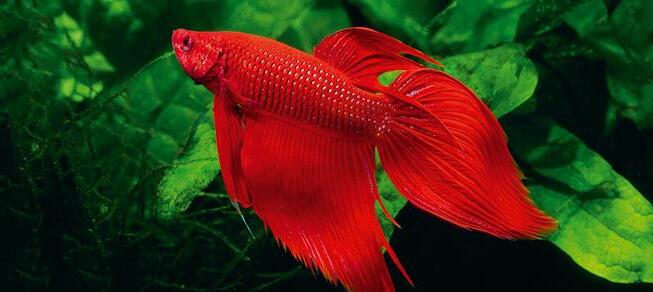 Plakat (PK) multicolor
Halfmoon (HM) green mustard gas
Red Veiltail
Plakat (PK) multicolor
Halfmoon (HM) green mustard gas
Red Veiltail
How to set up an aquarium for a fighting fish?

The size of the aquarium and its equipment
The minimum aquarium capacity for the fighting fish is 25 liters. However, it’s better to buy a bigger tank, especially for more active shorttail varieties. The tank should be equipped with a heater with a thermostat, a cascade filter or a small internal filter. As for aeration, the movement of the water surface or a spray bar in the case of indoor filters, facing upward, will suffice. Water movement should be low. Remember to cover the tank with glass or a lid to prevent the fish from jumping out. For open aquariums, it’s good to lower the water level, but this does not give a 100% guarantee that the fish will not jump out of it.
As decorations you can use roots, coconut shells, ketapang leaves, oak, beech and alder cones. They will also be a source of humic acids and tannins. They might give the water a yellow-brown coloration, but at the same time have an extremely beneficial effect on the health and condition of the fighting fish.
It’s also a good idea to stick the background, preferably black or blue, to the back wall of the aquarium. This will make the tank more appealing and have a positive effect on the fish, which will feel safer.
The substrate
You can choose from several types of substrates that differ in their properties. Neutral substrates that do not affect water parameters include sand and fine quartz gravel. They do not contain plant nutrients. Therefore, when planting plants, especially such as cryptocorynes and lesser water-plantains, it is a good idea to place fertilizer balls or capsules near their roots. You can also use a another special substrate under the neutral substrate to promote plant growth. Another group includes active substrates. These are nutrient-rich substrates designed to promote plant growth, which also reduce the pH and hardness of the water. However, starting an aquarium on such a substrate is a bit more difficult and we will not discuss it here.
Plants
The tank for a fighting fish needs to be planted. If you don’t plan on strong lighting and CO2 fertilization, give up plants with high requirements. You will avoid disappointments related to their death or poor growth. Also remember that fighting fish do not feel very well in a strongly lit aquarium. However, this does not mean that you can only introduce species with low light requirements, such as bolbitis, anubias, microsorum, cryptocorynes or
mosses. You can use a stronger lamp and plant floating plants such as: Salvinia natans, Limnobium laevigatum, Phyllantus fluitans , Hygroryza aristata , Ceratopteris cornuta. Bettas love them. They give them a sense of security, diffuse light, and are improve water quality. In aquariums with more light, you can plant rotalas, bacopas or even lawn plants. If you want more demanding plants, consider CO2 fertilization.
Remember that cryptocorynes and lesser water-plantains need a thicker layer of substrate. Microsorum, anubias and bolbitis are epiphytes. You do not plant them in the ground, but tie or glue them to roots and rocks. You do the same with mosses. Once the plants are planted, don’t expect spectacular results right away. They are living organisms. They need time to acclimate. Be sure to support them by fertilizing with Tropical Aquaflorin Potassium and Tropical Ferro-Aktiv.

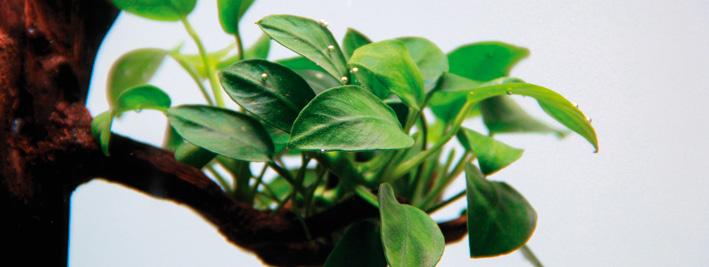
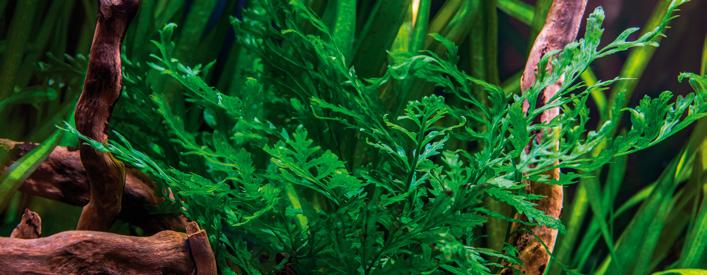
Water parameters suitable for bettas
Bettas are native to tropical climates. They like warm (25-28°C) and soft water (GH 5-10°n) with a pH in the range of 6.0-7.0 pH. If your tap water is very hard, you will need demineralized water, such as from an RO filter. By mixing it with tap water, you will get water with the right hardness for fighting fish.
Valuable additions to the water for bettas include humic acids and tannins. They are excellent for the health of fish. The easiest way to introduce them into the aquarium is by using ready-made extracts: Torfin Extract, Querex , Ketapang Extract, or appropriate decorations (see above).
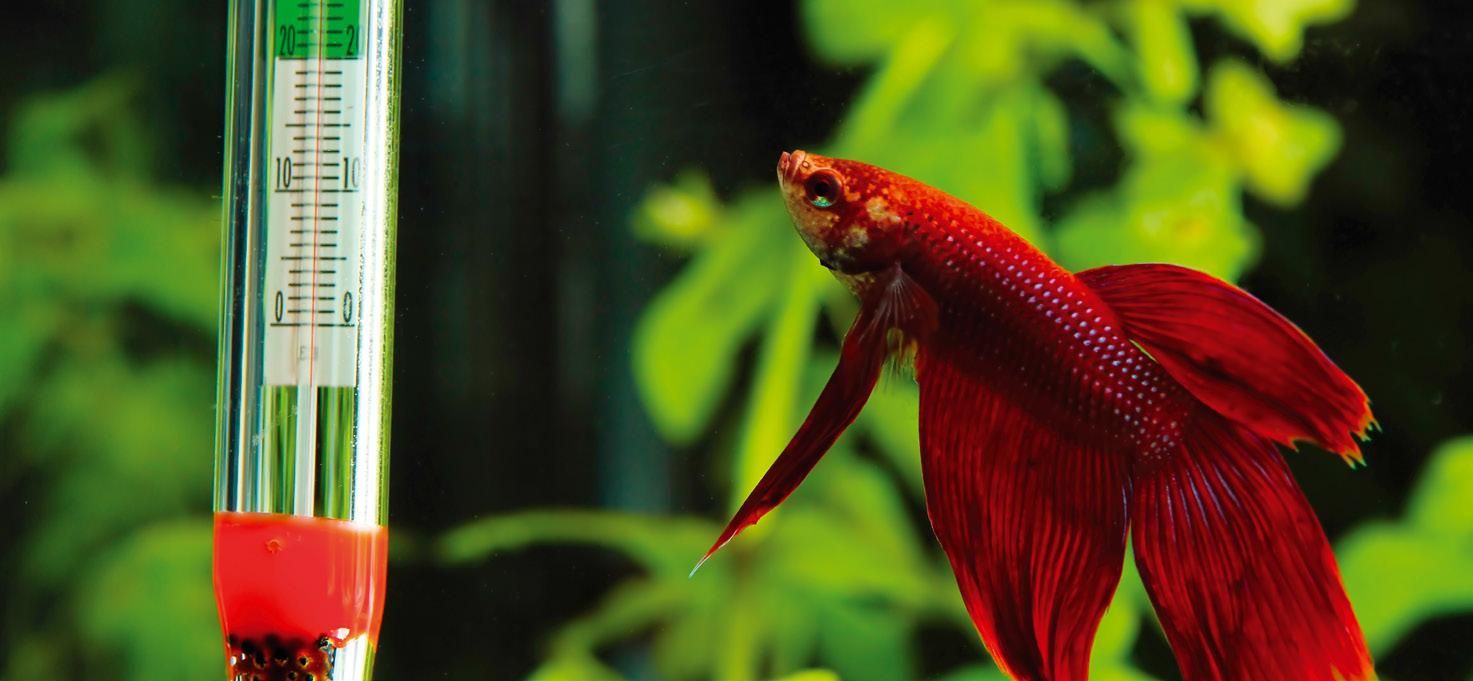 Anubias barteri
Microsorium pteropus
Bolbitis heudelotii
Anubias barteri
Microsorium pteropus
Bolbitis heudelotii
KETAPANG EXTRACT
Black water preparation
sea almond (Terminalia catappa) leaf extract for quick preparation of water to facilitate the breeding of ornamental fish and shrimps valuable ingredients extracted from sea almond leaves, and prepared in the form of a liquid, affect the parameters of water immediately after application
Ketapang Extract increases fish’s resistance to diseases accelerates the regeneration of epidermis, mucus coating and fins, therefore it is recommended after water changes, transportation and during acclimatization of fish to new conditions – the times when they are particularly susceptible to skin abrasions and cuts


TREATMENT: 10 ml / 50 l of water or until the water takes the desirable colour. Use after each total and partial change of water, after transportation and during acclimatization of fish to new conditions – the times when they are particularly susceptible to skin abrasions and cuts.
Ketapang Extract does not work in hard water. Use in soft and slightly acidic water. It does not harm useful filtration bacteria.


QUEREX
Oak bark extract
an oak bark extract for establishing water conditions that facilitate breeding and reproduction of ornamental fish adds to water natural tannins – organic chemical compounds classified as tanning agents, to create living conditions similar to those in which blackwater fish live encourages fish to spawn the hatch and survival rates of the fry increase as well accelerates the regeneration of epidermis, mucus coating and fins of the fish limits fish’s rubbing against elements of equipment or decorations
TREATMENT: 10 ml / 100 l of water or until the water takes the desirable colour. Use after each total and partial change of water, after transportation and during acclimatization of fish to new conditions – the times when they are particularly susceptible to skin abrasions and cuts. Querex does not work in hard water. To be used in soft and slightly acid water. It does not harm useful filtration bacteria.


TORFIN COMPLEX Peat extract
a high peat extract intended for establishing water conditions that facilitate breeding and reproduction of ornamental fish releases natural tannins and humic acids to create living conditions similar to those in which blackwater fish live encourages fish to spawn accelerates the regeneration of epidermis, mucus coating and fins of the fish limits fish’s rubbing against elements of equipment or decorations
TREATMENT: 10 ml / 100 l of water or until the water takes the desirable colour. Use after each total and partial change of water, after transportation and during acclimatization of fish to new conditions – the times when they are particularly susceptible to skin abrasions and cuts. Torfin Complex does not work in hard water. To be used in soft and slightly acid water. It does not harm useful filtration bacteria.
BLACKLARIN Blackwater conditioner
product with peat extract for conditioning tap water intended for aquarium use recommended particularly for starting new tanks with blackwater environment, during water changes, quarantine and convalescence periods in these tanks neutralises poisonous heavy metal salts protects fish against aggressive activity of tap water alleviates stress
peat extract is the source of humic acids and tannins, which make the environment of the tank safe and healthy accelerates the regeneration of epidermis, mucus coating and fins of the fish


TREATMENT: 10 ml / 50 l of tap water. Always use in newly-filled tanks and after each total and partial change of water, after transportation and during acclimatization of fish to new conditions, when they are particularly susceptible to skin abrasions and cuts.
Blacklarin is intended for medium hard and soft water. It gives water slightly amber tint. Does not lower the pH level.
INSTRUCTIONS: Apply other products only after a few minutes.
The number of fish in a tank
Bettas should absolutely be kept singly regardless of gender. It is possible, however, to keep several females in one aquarium. In this case, the aquarium should have a capacity of at least 100 liters with plenty of hiding places and densely planted with plants. However, even this does not guarantee peaceful coexistence of fish.
Companionship for fighting fish
The best solution is to keep only one betta in the tank. For a 25-liter aquarium, you can introduce some species of ornamental snail. Some aquarists manage to keep a fighting fish with shrimps. However, whether a betta will give them a break or treat them as a snack depends on the individual. When choosing a stocking for a fighting fish in larger tanks, you must keep in mind its specific requirements (high temperature and little water movement). Bettas can be combined with species such as the lambchop rasbora (Trigonostigma espei ), the dwarf rasbora (Boraras maculatus), the ember tetra (Hyphessobrycon amandae), the yellow neon rasbora (Microdevario kubotai ), true Kuhli loach (Pangio kuhlii ), and Danio margaritatus

Aquarium care
In a mature aquarium, 20% of the water in the tank should be changed every week. Due to the fact that fighting fish are generally kept in small aquariums, such water is best when set aside. This means that the day before, you should pour the necessary amount of water into a bucket or other container and leave it. It will naturally escape chlorine and increase its temperature. It is important to remember that the temperature of the water for changes should be close to that in the aquarium. Therefore, you usually need to raise it, using a heater, or by adding some hot water. Before pouring it into the aquarium use Tropical Blacklarin, dedicated for black water biotopes. It is also advisable to use Tropical Bacto-Active and Tropical Nitri-Active with bacteria.
Foods for fighting fish
Bettas are carnivorous fish. They readily eat live foods such as Grindal worms, artemia, daphnia, glassworms and cyclops. However, their diet should also contain granulated and flake foods, which will provide them with a varied diet, adequate levels of natural carotenoids as well as vitamins and trace elements. You can compose the diet based on the foods listed below. Each will provide fighting fish with all the necessary nutrients. It is worth including in their diet products for coloration and strengthening immunity. Recommended foods are characterized by an optimal phosphorus content that meets the needs of fish and does not increase the concentration of this element in the water, and thus does not contribute to algal blooms.

Learn more:
About fish nutrition
Betta
a staple food in the form of a mixture containing flakes and freeze-dried bloodworm (5%) for bettas and other small species of labyrinth fish ( Anabantoidei )
high content of astaxanthin (100 mg/kg) and beta-carotene (127.5 mg/kg)
intensifies fish coloration
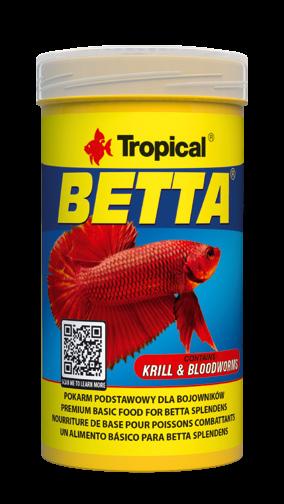

exceptional palatability of the food is the result of the combination of flakes with krill and squid and freeze-dried bloodworm
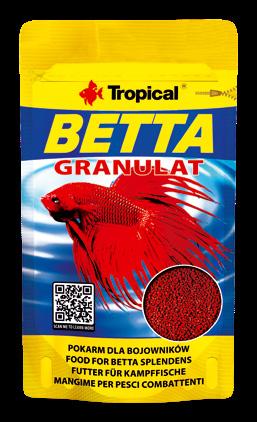
Betta Granulat

basic food in the form of fine granules for fighting-fish and other small labyrinth fish ( Anabantoidei )
rich formula provides fish with a daily dose of nutrients
astaxanthin present in the food enhances the coloration of fish
exceptional palatability encourages fish (even fussy eaters) to feed


Soft Line Betta
soft, slow-sinking mini granules for fighting fish and other small labyrinth fish ( Anabantoidei )
complete protein from herring and insects ensure optimum growth
Omega-3, Omega-6 and Omega-9 fatty acids enhance the condition of fish, their immunity and development
intense colors are the effect of a high content of carotenoids, including those from calanus and red pepper as well as the addition of astaxanthin
natural immune stimulator – beta-glucan – enhances fish’s resistance to diseases
Red Mico Colour Sticks
color-enhancing food in the form of floating sticks shaped like a bloodworm, the so-called „red mosquito larva” (an insect of the Chironomidae family), when placed in the water current of the tank it imitates the movement of live insects, which encourages fish to feed astaxanthin and red pepper intensify fish colors


natural immune stimulator – beta-glucan – and stabilized Vitamic C enhance fish’s resistance to diseases


Tropical D-Allio Plus
strengthening food in the form of flakes with added garlic for all aquarium fish garlic naturally strengthens the immune system and regulates digestion due to its high nutritional value, optimally balanced composition of vitamins and trace elements together with natural properties of garlic, it is a perfect feeding solution for fish during medical treatment, recovery or acclimatization to new conditions
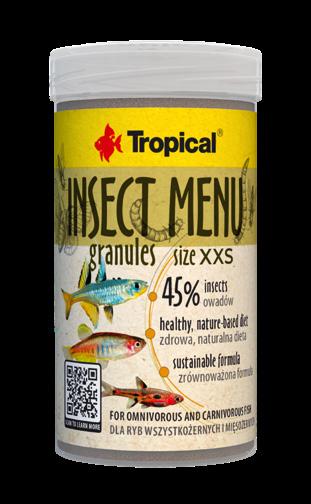
Insect Menu Granules size XXS
multi-ingredient food based on 3 insects: black soldier fly (15%), silkworm (15%) and mealworm (15%), for omnivorous and carnivorous fish contains only highly digestible insect protein, which stimulates the growth of probiotic lactic acid bacteria, resulting in better digestion, faster growth and greater immunity of fish
high fat content, including Omega-3 and Omega-6 fatty acids, is a source of energy for fish and supports skin function
significant content of chitin from insects activates immune cells and supports natural intestinal bacterial flora


Learn more:
Insects in fish nutrition
Pro Defence size S

food in the form of slowly sinking granules with probiotic probiotic added to the food contains viable Bacillus subtilis endospores, which stabilize gut microflora, facilitating utilization of nutrients, which in turn reduces contamination of water with fish’s feces the synergic effect of probiotic, beta-glucan, vitamins and carotenoids significantly improves fish’s overall condition and their immune system alleviates stress caused by transportation, spawning, intra-species aggression, rivalry etc.
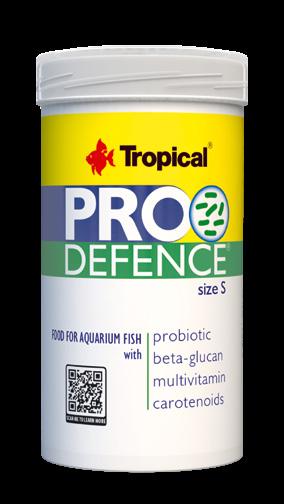
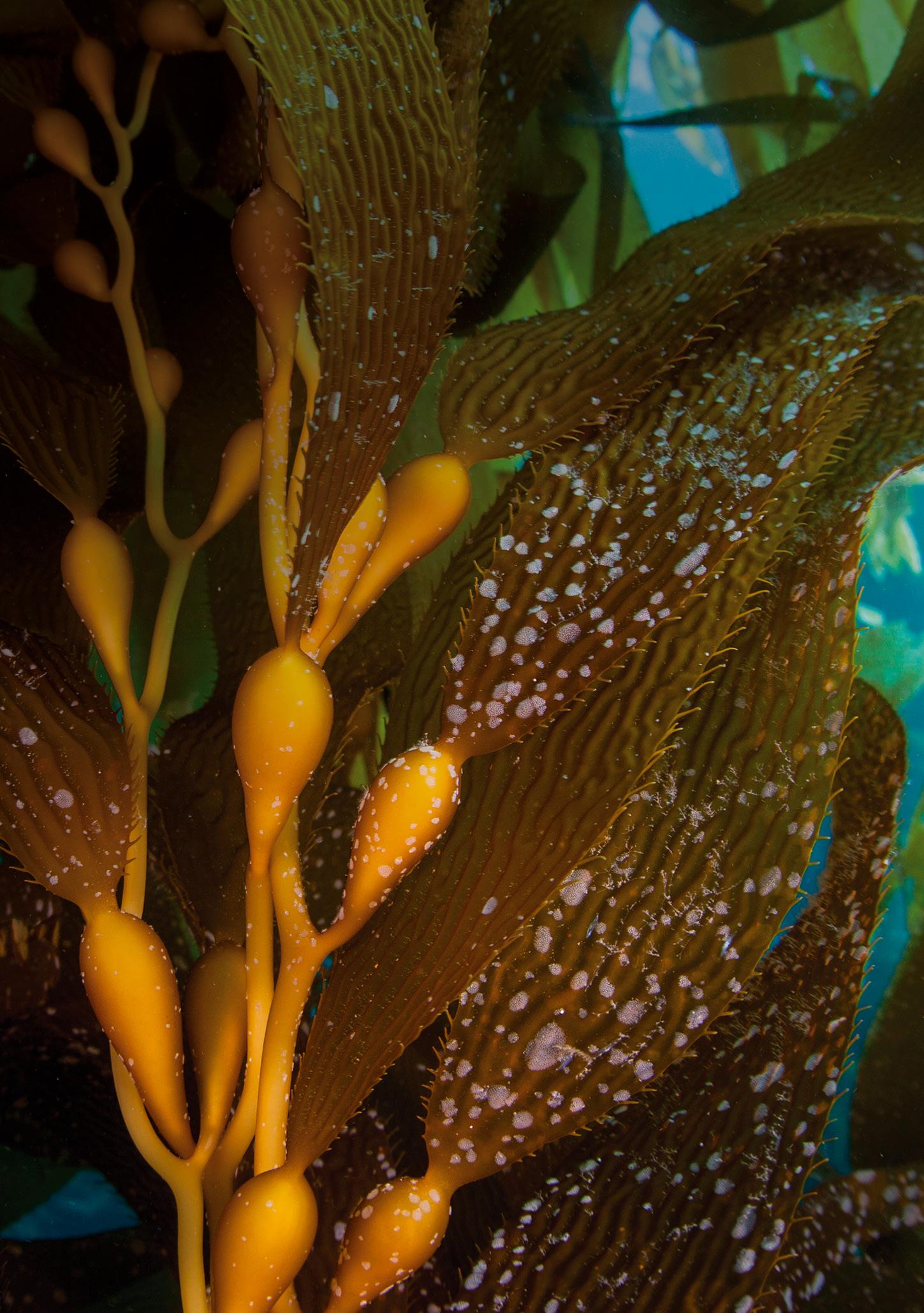
The riches of nature in Tropical foods

To enjoy healthy and active fish presenting splendid coloration one main condition must be met – a diversified diet based on high-quality foods. For the production of our foods we use more than 100 various raw materials. Each product contains minimum 20 ingredients which ensure food’s unique properties. Such a great number of raw materials used for fish food production corresponds with a wide variety of foods which fish have at their disposal in their natural environment. This way we can be sure that we provide fish with all essential nutrients. In addition, we have ensured optimal phosphorus levels in our foods. This covers the fish’s need for this element but at the same time reduces the amount of phosphorus excreted with the feces, which in effect reduces the influence of the food on algal blooms in the aquarium.
Selected natural ingredients in Tropical foods:
Red pepper is the source of carotenoids which enhance coloration in fish, improve their condition, maturation, reproduction and increase the resistance to diseases.
Algae used in Tropical foods are the source of high quality protein, macronutrients and trace elements, carotenoids and natural immune stimulators. They facilitate digestion, prevent inflammatory disorders of alimentary tract, enhance coloration and improve immunity.
Calanus (Calanus finmarchicus) is a plankton crustacean derived from North Atlantic waters. It is the source of astaxanthin, protein, rich in essential amino acids, and unsaturated fatty acids, including Omega-3.
Squid are high in protein but low in fats. They provide polyunsaturated fatty acids, including EPA and DHA. They encourage fish to spawn.
Insect larvae are a source of very good quality protein, fat, including unsaturated fatty acids Omega-3, Omega-6 and Omega-9, and chitin, which is beneficial to the digestive tract of fish.
Krill, due to its high palatability, make the food very tasty and eagerly eaten by fish. Moreover, ingredients contained in krill encourage fish to spawn and intensify fish’s coloration.
Oak meal is one of the ingredients of Pleco’s Tablets for Loricariidae fish. For some species within this family wood is a crucial dietary component.
Nettle has bacteriostatic and detoxicating effect; if added to foods, it facilitates digestion.
Spinach is a rich source of easily assimilable macronutrients, trace elements and vitamins.
Green pea is the source of valuable protein, easily assimilable by the fish, and the fibre, which regulates digestion.
Egg yolks are rich in fats, easily assimilable lecithin and the number of vitamins and trace elements. They contain lutein – one of carotenoids, which intensifies coloration in fish. Food with egg yolk – due to high energy value – recommended mainly for adolescent fry and spawning pairs.
Improved immunity in fish
A number of ingredients, used in Tropical foods, enhance fish’s immunity. It is recommended to introduce at least one food containing immunity booster.
Aloe – aloe extract added to food improves immunity and facilitates digestion.
Beta-glucan is a natural immune stimulator derived from the yeasts’ walls. It activates white blood cells, increasing their potential for absorbing and destroying microbes which invade fish’s bodies.
Chlorella vulgaris is microalga with a high content of protein (45-57%) rich in essential amino acids and carotenoids (0.4%). It contains beta-glucan and particularly high content of chlorophyll (2%), which facilitates digestion, reduces the number of decay bacteria in the gastrointestinal tract, acts as an antioxidant and helps to detoxicate.
Garlic (Allium sativum) contains sulphur compounds which have strong bactericidal properties. Helps to fight parasites in the alimentary tract.
Kelp algae is a mixture of brown algae, out of which Tropical uses two – Ascophyllum nodosum and Laminaria digitata. Kelp algae are the rich source of micronutrients and trace elements, including organic iodine. They contain high percentage of unsaturated fatty acids and dietary fibre, which regulates digestion and protects the alimentary tract against development of unwanted bacterial flora. Some compounds found in Kelp algae have bactericidal and antiviral properties.
Carotenoids – natural pigments present in higher plants, algae and crustaceans. Apart from coloration enhancement, carotenoids improve fish’s overall condition and resistance to diseases. Tropical foods contain concentrated astaxanthin and beta-carotene derived from natural sources and raw materials rich in carotenoids: krill, spirulina, chlorella and red pepper.
Insect larvae – contain chitin, which has prebiotic properties, positively influencing the growth of lactic acid bacteria in the intestines of fish. In addition, insects contain extremely interesting substances that inhibit the growth of pathogens – antimicrobial proteins (AMP – antimicrobial peptides).
Unsaturated fatty acids (UFA), including Omega-3 and Omega-6 improve fish’s resistance to diseases, help to assimilate vitamins A, D, E and K, improve skin’s function as a protective barrier.
Probiotic – viable Bacillus subtilis endospores, which stabilize gut microflora, facilitating utilization of nutrients, improving immunity and overall health and condition.
Spirulina (Arthrospira platensis) is microalga known for its high content of protein (60-65%) rich in essential amino acids. It is the source of chlorophyll, carotenoids, unsaturated fatty acids and natural immune stimulators. Thanks to these substances spirulina enhances the immune system.
Learn more: Spirulina

Food with probiotic



How to choose the right fish food?
1. Check dietary requirements of species you wish to keep in available literature.
2. Choose the size and form of the food.
Fish in the wild live in specific parts of the reservoir. Some live near the bottom, some in the middle layers of water and some among the plants. Other species prefer regions under the surface of water. Particular zone can be usually guessed on the basis of the shape of fish’s body and the placement of its mouth. This makes selecting proper form of food much easier.
Thanks to the availability of various forms one can perfectly match proper product to a given species, taking into account food size and the place and way of feeding.
Flakes
Most universal form of food. Suitable for fish living in all parts of the reservoir. Thanks to their delicate structure they float when coming into contact with water and then slowly sink. Floating all over the tank, they allow all species, even less energetic and the ones lower in the hierarchy, to feed. You can crumble them in case you need smaller bites.
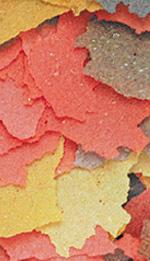
Placement of the mouth Zone of feeding Form of the food upper surface of the water flakes, pellets, sticks, dried and freeze-dried foods medium middle layers of water granules, chips, flakes, adhesive tablets, plano-convex tablets lower bottom of the tank adhesive tablets, sinking tablets, plano-convex tablets, wafers, granules, flakes


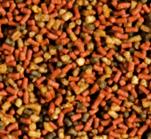



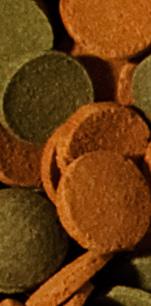
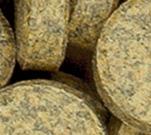
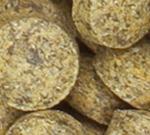
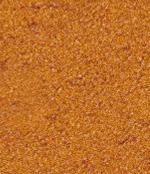


Granules
Concentrated dose of food in the form of granules of various sizes: granules (1.4-6.0 mm), mini granules (0.8-1.2 mm) and micro granules (0.5-0.7 mm). They are sinking and slowly sinking foods. Suitable for fish eating in the middle layers of water and at the bottom. Most granules have even surface. Thanks to their closed pores they slowly absorb water, hence do not disintegrate in water, which limits the release of valuable ingredients. Tropical offers also includes the so called “bites” granules, which have uneven surface and soften quicker, hence provide perfect feeding solution for sensitive fish and the ones which are not particularly keen to eat granules.
Chips
Type of granules which resemble flat disk. They sink quickly but do not disintegrate in water. Intended mostly for large species of fish. Served to smaller fish, it is nibbled and bitten piece by piece, which limits the phenomenon of fast swallowing of small granules by particularly voracious fish.
Pellets and sticks
Floating foods for medium and large fish which feed at the surface of water. Pellets in the shape of balls are available in size S (3.5 mm) and M (5-6 mm). Sticks are available in size M (4 mm) and L (6 mm).
Wafers (discs)
This food is dedicated to feeding fish that live near the bottom and crustaceans. Wafers rapidly fall onto the bottom, which helps to place them exactly in bottom feeders’ favourite spots or directly into the hiding place of timid species. Wafers absorb the water slowly, hence maintain their shape in the tank. Their shape and structure allow Loricariidae fish to use their suckermouths and teeth the way they do in the wild and feed by scraping food from various surfaces.
Tablets
Foods in the form of tablets are recommended for feeding bottom feeding fish, crustaceans (sinking tablets, adhesive and plano-convex) and fish that live in the middle layers of water, including the fry (adhesive tablets and plano-convex). Adhesive and plano-convex tablets should be adhered to the glass of the tank. All tablets fall into tiny parts in the water.
Micronised foods
Foods in the form of fine powder intended for feeding the fry. In case of big fry, for instance of live-bearing fish, micronised foods may be used from the moment young fish start to feed.
Natural foods
Dried or freeze-dried invertebrates (Daphnia, Gammarus, artemia, bloodworms, Tubifex, shrimps) rich in chitin and carotenoids. Biologically safe. Perfectly supplement ornamental fish’s diet.
Soft foods
Foods in the form of various soft granules obtained through advanced and innovative production technology. Thanks to their soft texture they are more readily accepted and digested by fish.
NOTES . . . . . . . . . . . . . . . . . . . . . . . . . . . . . . . . . . . . . . . . . . . . . . . . . . . . . . . . . . . . . . . . . . . . . . . . . . . . . . . . . . . . . . . . . . . . . . . . . . . . . . . . . . . . . . . . . . . . . . . . . . . . . . . . . . . . . . . . . . . . . . . . . . . . . . . . . . . . . . . . . . . . . . . . . . . . . . . . . . . . . . . . . . . . . . . . . . . . . . . . . . . . . . . . . . . . . . . . . . . . . . . . . . . . . . . . . . . . . . . . . . . . . . . . . . . . . . . . . . . . . . . . . . . . . . . . . . . . . . . . . . . . . . . . . . . . . . . . . . . . . . . . . . . . . . . . . . . . . . . . . . . . . . . . . . . . . . . . . . . . . . . . . . . . . . . . . . . . . . . . . . . . . . . . . . . . . . . . . . . . . . . . . . . . . . . . . . . . . . . . . . . . . . . . . . . . . . . . . . . . . . . . . . . . . . . . . . . . . . . . . . . . . . . . . . . . . . . . . . . . . . . . . . . . . . . . . . . . . . . . . . . . . . . . . . . . . . . . . . . . . . . . . . . . . . . . . . . . . . . . . . . . . . . . . . . . . . . . . . . . . . . . . . . . . . . . . . . . . . . . . . . . . . . . . . . . . . . . . . . . . . . . . . . . . . . . . . . . . . . . . . . . . . . . . . . . . . . . . . . . . . . . . . . . . . . . . . . . . . . . . . . . . . . . . . . . . . . . . . . . . . . . . . . . . . . . . . . . . . . . . . . . . . . . . . . . . . . . . . . . . . . . . . . . . . . . . . . . . . . . . . . . . . . . . . . . . . . . . . . . . . . . . . . . . . . . . . . . . . . . . . . . . . . . . . . . . . . . . . . . . . . . . . . . . . . . . . . . . . . . . . . . . . . . . . . . . . . . . . . . . . . . . . . . . . . . . . . . . . . . . . . . . . . . . . . . . . . . . . . . . . . . . . . . . . . . . . . . . . . . . . . . . . . . . . . . . . . . . . . . . . . . . . . . . . . . . . . . . . . . . . . . . . . . . . . . . . . . . . . . . . . . . .
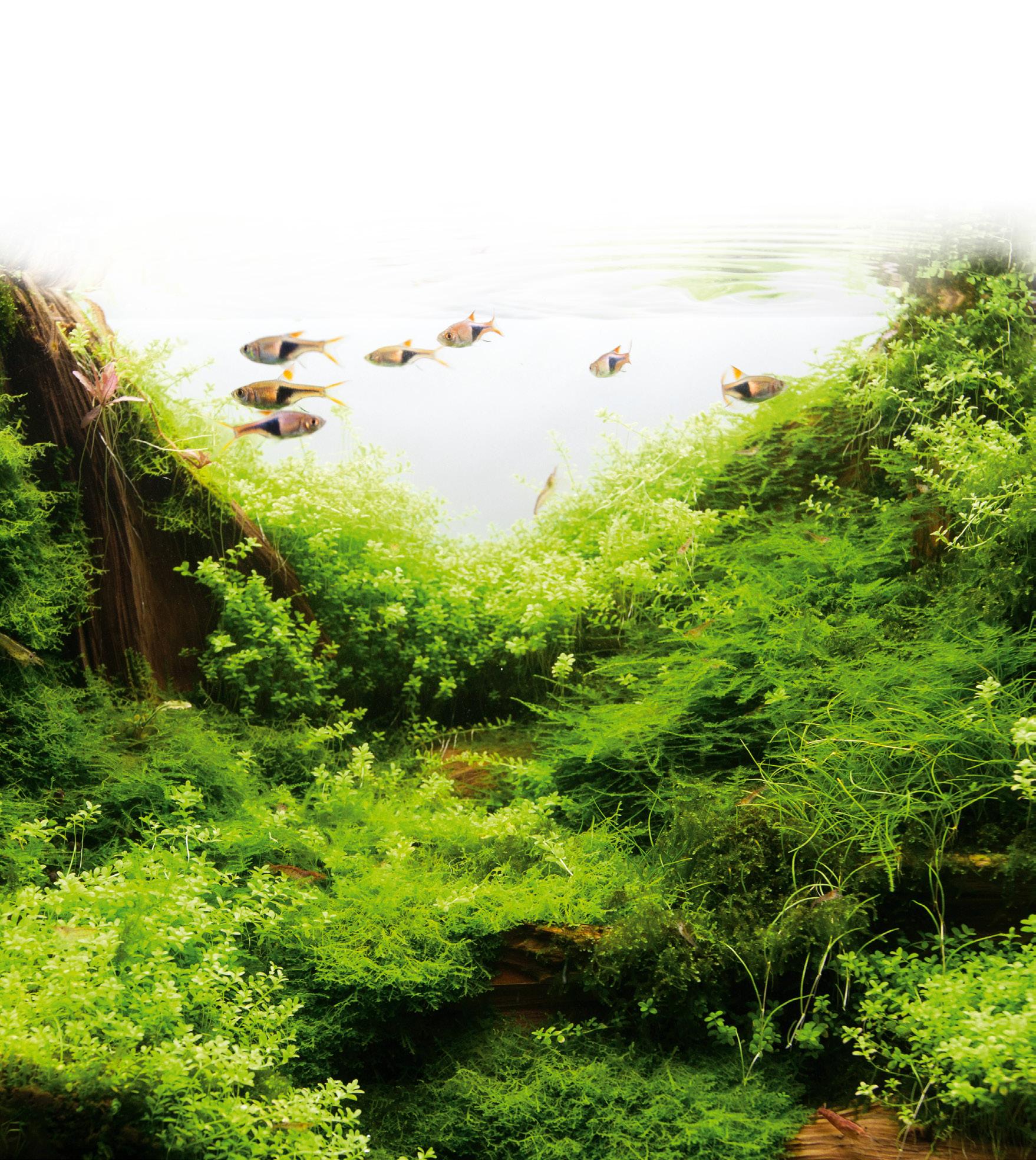
PREAPARING
AQUARIUM WATER WITH TROPICAL

Together they work better!
Safe water for your fish, crustaceans and plants is the result of the combined action.
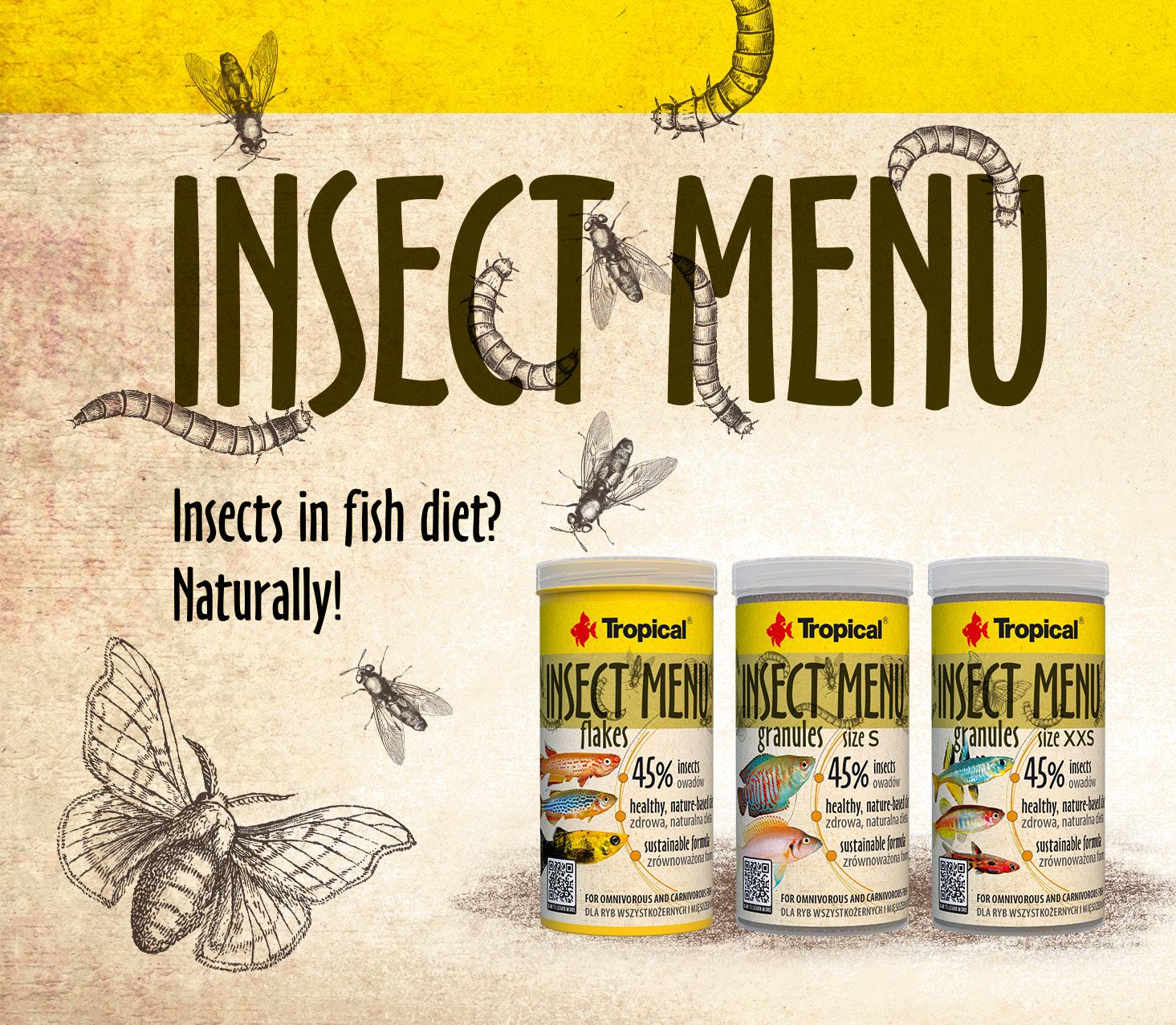
Information materials
P1111ENG –text by Aleksandra
PhD © –TROPICAL T. Ogrodnik 2024 Wersja: 01
The address of your shop: TROPICAL Tadeusz Ogrodnik ul. Opolska 25, PL 41-500 Chorzów www.tropical.pl
04.2024, code:
Kwaśniak-Płacheta




































 Plakat (PK) multicolor
Halfmoon (HM) green mustard gas
Red Veiltail
Plakat (PK) multicolor
Halfmoon (HM) green mustard gas
Red Veiltail




 Anubias barteri
Microsorium pteropus
Bolbitis heudelotii
Anubias barteri
Microsorium pteropus
Bolbitis heudelotii











































